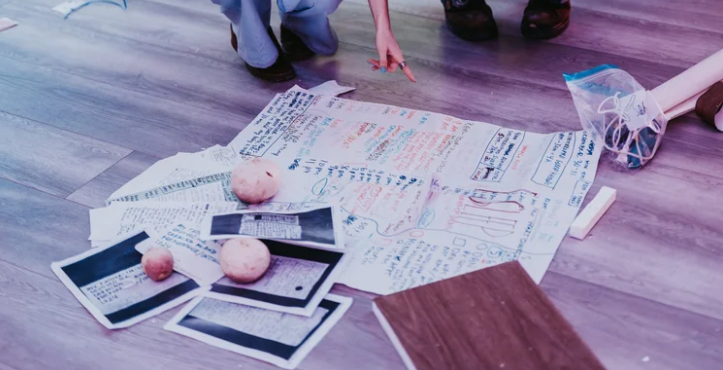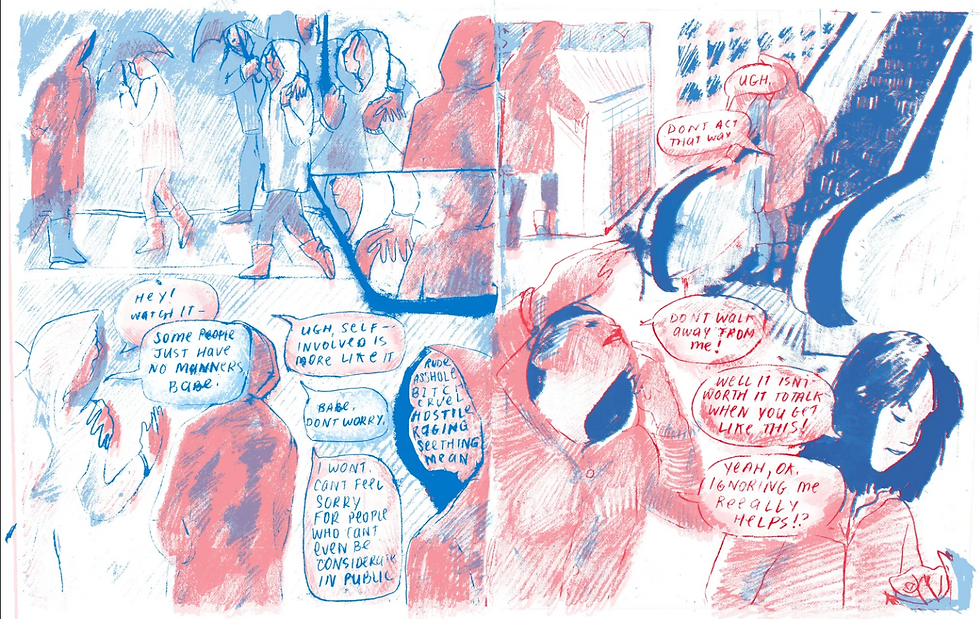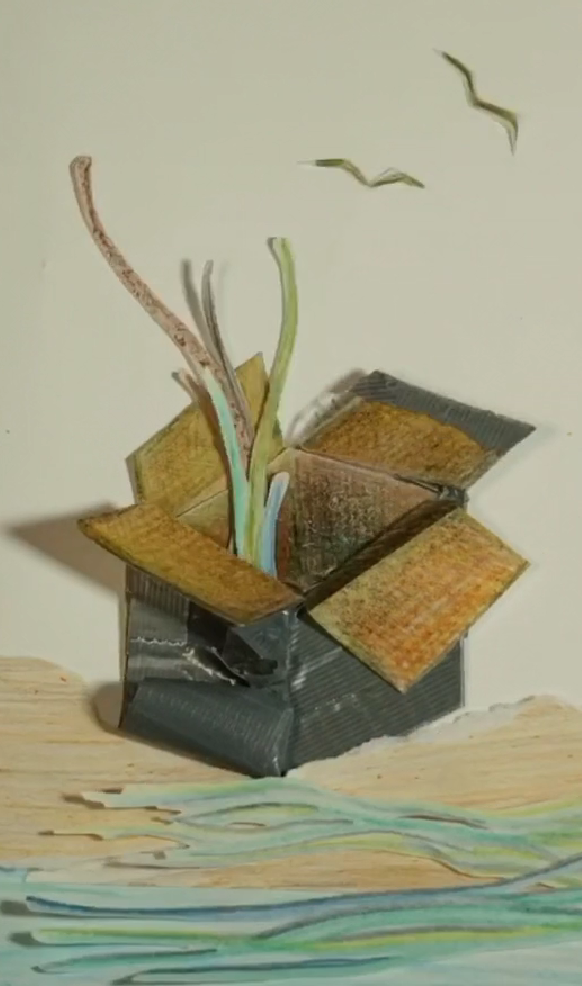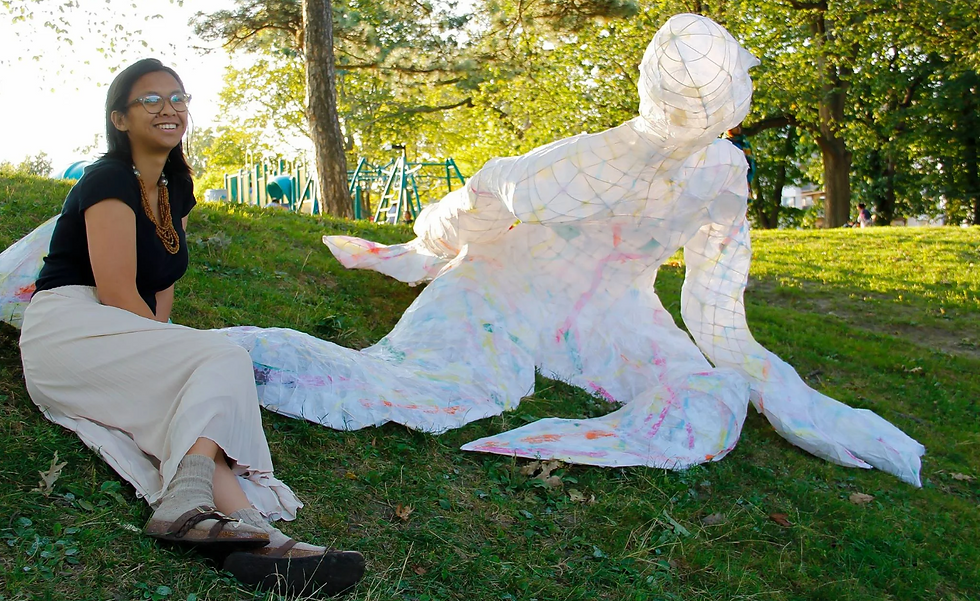An Interview with Carmina Miana - Interdisciplinary Artist
- MAC CAM

- Aug 22
- 4 min read
Carmina Miana is an Ottawa-based interdisciplinary artist, born in the Philippines and raised in Scarborough, Ontario. Her practice spans tactile and technological forms, including ceramics, fibre soft sculpture, photography, and stop-motion animation, bridging the sister practices of art, design, and craft.

Deeply influenced by her Filipino heritage, Scarborough upbringing, and lived experiences as a member of the Filipino diaspora – including marginalization and cultural hybridity – Miana's work explores complex relationships between care and sacrifice, history, change, and transformation. Her art is imbued with memories and echoing calls for belonging, examining identity, community, and inviting engagement with themes of transformation.
Miana's current series, "hataw, Binakael", exemplifies this exploration, focusing on cultural connection, home, and her personal journey through pregnancy and motherhood. The work is crafted from 'test' cyanotypes created over three years in Toronto (where she lived most of her life pre-pandemic), Vancouver (visiting in-laws), and Ottawa (establishing her current home). It draws inspiration from protective Filipino weaving patterns, specifically one believed to confuse evil spirits and symbolize a pregnant woman's belly button.
The series engages with quilting and collage methodologies of upcycling, translating this traditional weaving structure – carrying generations of Filipino knowledge – into a form suited for Canadian winters. The bilingual title reflects her playful engagement with Filipino dialects: "hataw" (Tagalog for "to hit/strike," colloquially meaning "give your best shot," and relating to an "overshot" weaving structure) and "Binakael" (Ilocano, her family's mother tongue, meaning "to make whole/to complete," representing an act of becoming whole).
Shifting the work from functional cloth (cloaking a body) to wall art creates tension between physical vulnerability and visibility. This mirrors the evolution of cultural identities across generations and prompts reflection on cultural transmission and legacy.
The cyanotypes' inherent lightfastness, especially when exposed to UV light, further contributes to this dialogue. The resulting quilted pieces exhibit emotions and nuanced meanings – exploring critiques of female labour, care, and duty through tactility – that unfold pattern by pattern, image by image, offering a resonant story beyond words.
Through her meticulous attention to material histories and the tensions between tradition and change, Miana offers a profoundly nuanced perspective on the immigrant experience and the complexities of cultural identity in contemporary society.
In our interview, we asked Carmina about her relationship to identity and change in connection to her art, and in the audience of a multicultural community.
What does community and cultural expression mean to you, particularly within this multicultural event?
Both those things require a level of trust, safety, and ultimately freedom. In the absence of that I think one can feel bold to stand on their own, but without even a single witness to that act of freedom, it may feel less impactful. Having space for community and celebration is so important for diasporic voices to be heard.

What’s a cultural or spiritual tradition you’re drawn to that informs your artistic process?
I don’t know that this comes from any one culture, but the immigrant journey to finding home and belonging is really what my work embodies.
Recently, I’ve been working with the binakael weaving pattern in my Filipino culture to explore these ideas and extend the cultural dialogue of this pattern. The intensely graphic/geometric symmetry of this pattern exists as other names in other cultures, but in the Filipino tradition, it is meant to confuse evil spirits and protect the wearer. My attempts at perfecting the pattern are like siren calls to my ancestors to cross waters and guide me.
Has a personal spiritual experience ever shifted the direction of your art?
Yes, becoming a mother has really challenged my identity and purpose. I dedicate all my work to my son. My work is no longer just my creative legacy, it’s a story for him to discover about his heritage and his mother.

Do you think identity is something inherent or something you construct through creative expression?
Identity is constructed. Sometimes as an artist I think our identities are our work, how we think and what we do with that feedback of communication. I believe the viewer or witness or participant that experiences an artists’ work also constructs the artist identity. Hopefully we work together to make a holistic image of a person, but as long as that small glimpse feels true for both, I think it’s successful.
I also think that an artist is a conduit to a unified cultural energy. Artists are custodians to an idea; we give it space, a voice, a way to exist for us to collectively reflect.
Has your practice evolved over time in response to particular eras of social or cultural change?
Yes, I’m not a particularly vocal political artist. I’ve held firm that my work is political without my personal views.

How do you encourage viewers to bring their own identity into dialogue with your work?
To be unafraid to be wrong. Be open to what you see and feel. Follow that gut/intuition/pull/idea. Ask questions. Laugh. Cry. Feel what it is you see. Experience that moment and be present.

What do you hope someone walks away feeling after encountering your work?
I hope people feel present. The biggest ask to any viewer is to be fully present. It’s a little unexplainable what happens when I’ve walked away from art work that has the power to shift my worldview. It’s remarkable to have art challenge you in incremental ways through your life. I can only hope my work leaves a lasting impression like that.

Meet Carmina Miana at the Threads of Belonging ART+ Fall 2025 Exhibition on 3rd and 4th October at the Arts Court Atelier, 2 Daly Avenue, Ottawa.




Comments